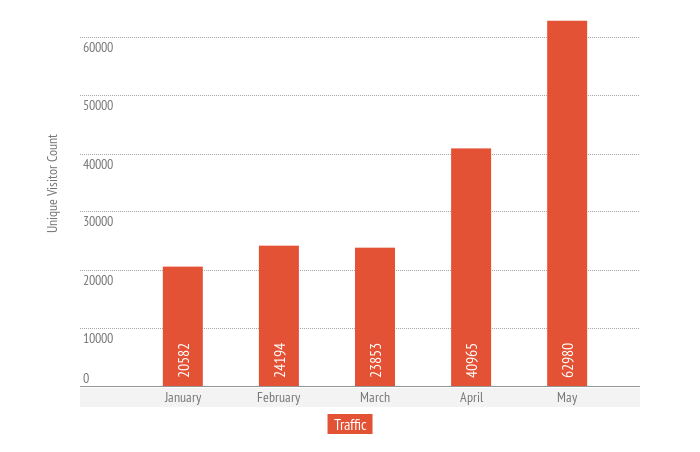Simple explanation by Dmitry Shakhov on where to look for traffic growth points and SEO of your site.

Apparently, there has been little educational activity about this lately. It seems clear for the specialists, but not for clients, as it turned out. So let's dive deeper into this.
Traffic types
Is SEO when a website gets more traffic from search engines? Yes and no. We need to understand the essence of what we receive from the search.
- Type-in traffic. It’s when one types the site in the search and goes to your site. It’s not necessarily in the search, they can also type it in the address bar in a browser, but it is important that they go directly to your site. The traffic volume depends on external advertising, brand awareness, and the URL of the site. The majority of people go to the Avito website by typing the site address, and not by topicrequests, although it seems that they are everywhere in the first search result lines.
- Brand traffic. It’s when people search for a site by brand/person name. And again, this is more about the volume of external advertising and brand awareness. There are cases when a clone site intercepts a brand position, but this problem is solved by a pre-trial claim, and not through SEO. Having analyzed the traffic structure of one large furniture company, it turned out that 85% of search users come to the siteby typing the brand name of that company. And they can’t changeit in favor of topic traffic.
- Product traffic. It’s traffic that comes to your site by product name. Let’s say you have a product, a well-designed product card, a market price: that’s the right way to hit the top rankings. All workabout product traffic is concentrated around two vectors: product pages indexing and work with commercial factors: from assortment to ease of purchase. Developing each page separately is inconvenient and financially ineffective. For instance, let’s take the field of pharmacy. Up to 95% of search traffic in a pharmacy is product traffic. As for topic traffic, it is only used for cases and reports.
- Topic traffic. Used for requests that imply a category of goods or services. This is where sites have to fight and struggle for positions and traffic. This is where sites require a lot of effortfor all groups of factors. And it can take months or even years to achieve some result.
How to search growth points
Where can you find the growth points in topic traffic? You will see only few points unless a site has anundeveloped structure and it wasn’t competently optimized previously.
- The main growth point means adding new topic pages to the site. But if it is about cleaning services, for example, you won’t be able to add many pages like this. But in case with a store site, you can keep adding new pseudo-categories pages as long as they are competitive in terms of a set of products with other sites in the niche. And they will not intervene in the set of products with other categories within the site.
- The second growth point in search traffic is pulling pages to the top for already known queries from the core. Almost all traffic comes from the top 3. When we deal with a large core, this becomes a long and sweating work. The same is with a small core, plus the competition is outrageous.
- The third growth points are experiments, search for new horizons, attempts to influence non-obvious things. For example, migration from commercial content to mixed content of clinic sites. Or going into information traffic by creating a blog. Or building a network of sites. Or...
Summary
The moral is simple. Each site has its own SEO way.
In some cases, it doesn’t fit the indications. In other cases, it’s financially ineffective in comparison with other sources. And in some cases, it can have explosive growth. But there are also cases where you have no other choice but to fight till the end in your niche even for those crumbs that you have not yet pulled out of the search.
Other articles:
























 3,381
3,381



















